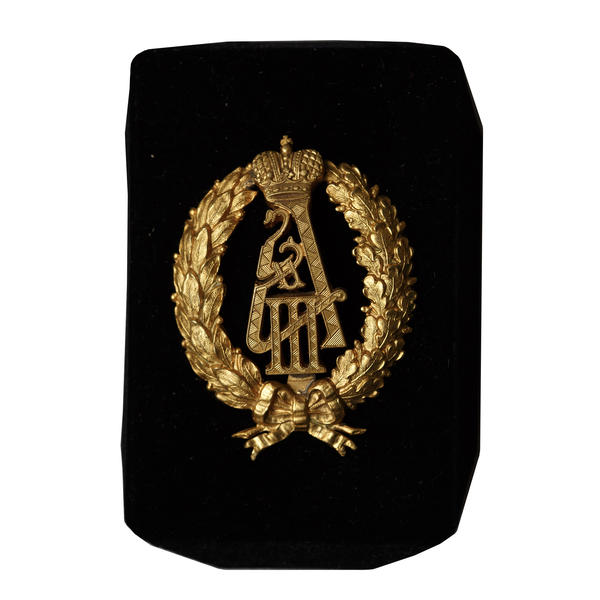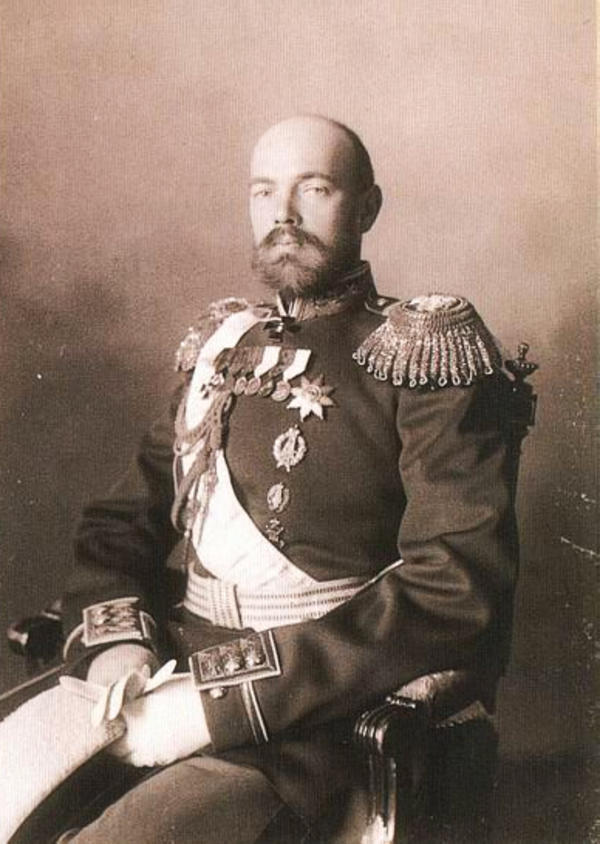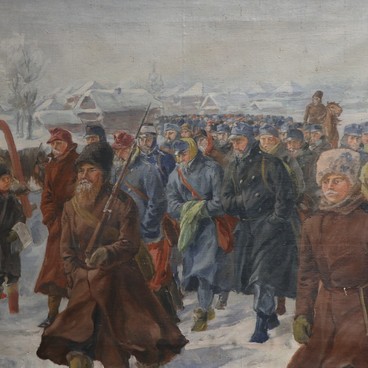In the Russian army there were retinue ranks. They were held by persons who were in the close escort of the Emperor; for example, Grand Duke Sergei Mikhailovich served as an aide-de-camp at the retinue of Alexander III since he was 20 years old.
Badge of the Retinue of Emperor Alexander III
Размер
4,6x6,1 cm
Техника
Modern replica
4
Открыть в приложении#1
The Badge of the Retinue of Emperor Alexander III
#2
#5
This position was established at the beginning of the 18th century. High-ranking commanders gave important assignments to aides-de-camp: they relayed commands to the flanks of the troops, monitored execution of orders and carried out important personal instructions of the commanders. The position was honorable, because it implied proximity to the highest military leadership. In the 19th century, aides-de-camp ceased to perform actual adjutant functions, and the position was becoming more and more honorary and not associated with specific duties. As a rule, members of the Emperor’s retinue served in other military and civilian positions.
Being an adjutant to the Emperor was considered a great honor. Members of the imperial retinue enjoyed benefits and privileges. Unlike ordinary officers, they were free to visit the royal palace during various events. Members of the retinue had the right to audiences with the Emperor, and could submit reports directly to him. They escorted foreign delegations, accompanied the Emperor at parades, shows and in the theater. Aides-de-camp attended the Tsar in the palace: it was their duty to introduce to the Emperor the guests who came to receptions, and they were responsible for keeping order during the official reports. Aides-de-camp wore uniform decorated with epaulettes and with a special aiguillette, a shoulder sign in the form of a silver cord.
#4
Grand Duke Sergei Mikhailovich. Source: wikipedia.org
The special honorary badge “For Service in the Retinue of Emperor Alexander III” was introduced by Nicholas II in 1894. Aides-de-camp received badges in the shape of silver wreath with a crown. A copy of such badge is presented in the exposition Napolnaya School in the town of Alapayevsk. The title existed not only in Russia, but also in other countries, for example, in the armies of Great Britain and Germany.
#6
Those promoted to the rank of General of Army, received the title of adjutant-general. The title was personally granted by the Emperor. In 1908, at the age of 39, Grand Duke Sergei Mikhailovich became adjutant-general of the imperial retinue of Nicholas II.
All retinue ranks of the Russian Empire were abolished after the February Revolution in 1917.
All retinue ranks of the Russian Empire were abolished after the February Revolution in 1917.
#7
Sverdlovsk State Regional Ethnography Museum
читать дальшескрыть
00:00
00:00
1x
Badge of the Retinue of Emperor Alexander III
Размер
4,6x6,1 cm
Техника
Modern replica
4
Открыть в приложении
Поделиться




